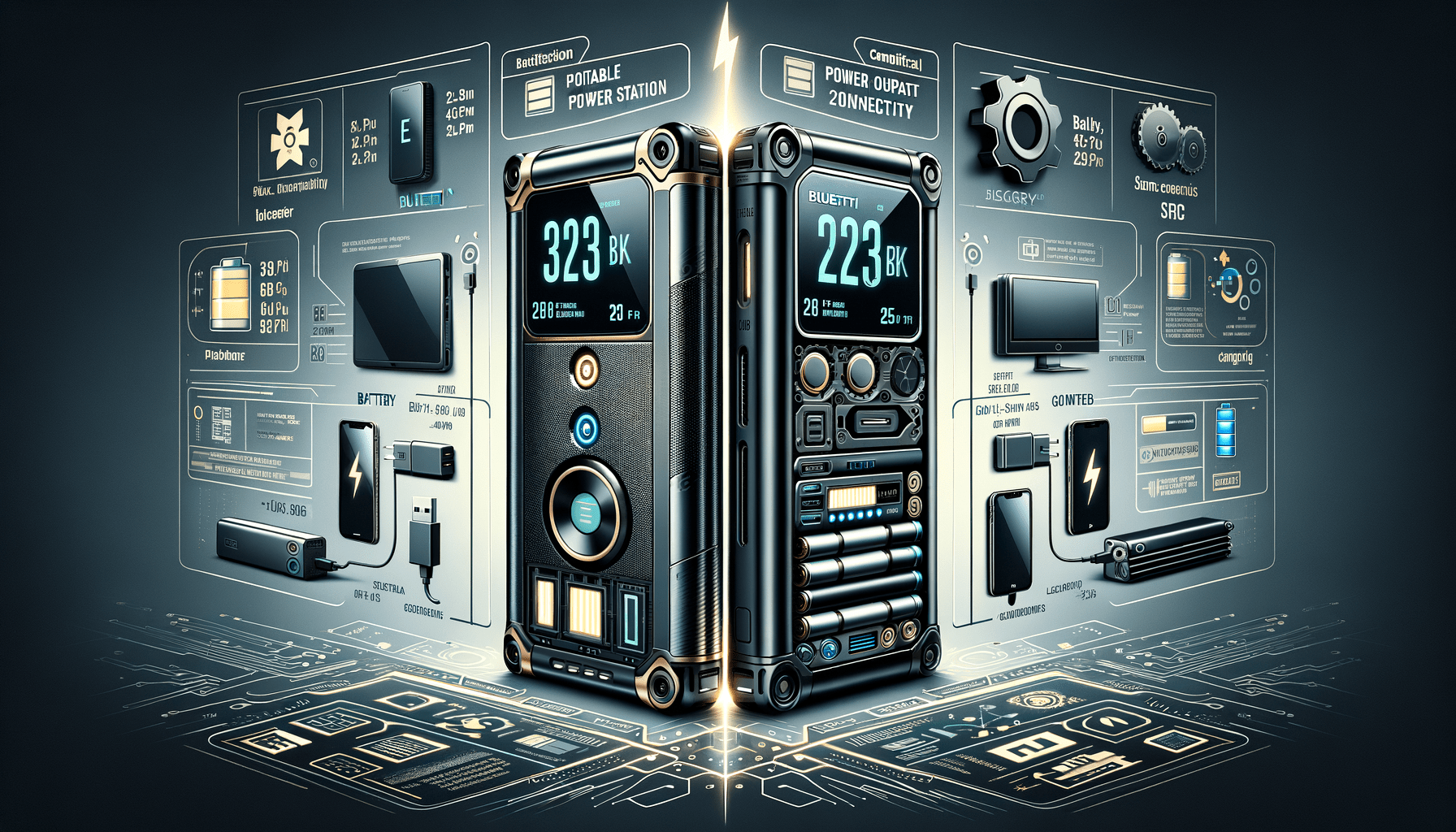Are you in search of a reliable, portable power solution for your outdoor adventures, professional work, or emergency preparedness? Two popular power stations – the Jackery 100 Plus and the EcoFlow Delta Mini – claim to meet these needs with their own unique features. In this detailed comparison, we’ll break down the technical specifications of both products to help you decide which one fits your requirements best.
Battery and Power Capacity
When it comes to power capacity, the EcoFlow Delta Mini is a powerhouse with its 882Wh capacity and a 1400W AC output, compared to the Jackery 100 Plus’s 99Wh capacity and a 100W PD output. The Delta Mini can also support higher power needs with its surge capability of 2100W, whereas the Jackery 100 Plus has a continuous output rating of 128W.
Charging and Port Options
Both power stations offer versatile charging options, but there are differences. The Jackery 100 Plus gets to full charge quickly at 1.8 hours with a 100W PD Adapter and is compatible with solar charging using the SolarSaga 100W panel. Meanwhile, the EcoFlow Delta Mini can recharge even faster in approximately 1.6 hours via an AC wall outlet and supports higher wattage solar inputs (up to 300W) for off-grid charging.
Portability and Design
In terms of portability, the Jackery 100 Plus is extremely lightweight at 965 grams and is even airline-approved for carry-on. The EcoFlow Delta Mini is bulkier, weighing in at 23.6 lb but still maintains a relatively compact and easy-to-transport design.
Durability and Safety
Both devices showcase robust safety features. The Jackery boasts a fully upgraded BMS for protection and is crafted from flame-retardant materials. On the other hand, the EcoFlow has an extensive BMS that safeguards against electrical issues and uses NCM Li-ion battery technology, proving strong resilience.
Lifecycle and Environmental Impact
The lifecycle of the power station’s battery is a key factor. The Jackery 100 Plus boasts an impressive 2,000 cycle lifespan, while the EcoFlow Delta Mini offers 800 cycles to 80% capacity, which is still respectable given its higher capacity. Both brands commit to environmental responsibilities, but Jackery takes a step further in September 2023 by offering 100% recyclable eco-friendly packaging.
Additional Features
Both the Jackery and EcoFlow offer additional perks such as a real-time power station status monitoring app. The Jackery app also features a Silent Charging Mode and advanced MPPT technology for efficient solar charging, while the EcoFlow app provides smart management tools for monitoring input and output data.
Comparative Spec Table
| Feature | Jackery 100 Plus | EcoFlow Delta Mini |
|---|---|---|
| Battery Capacity | 99Wh | 882Wh |
| Lifecycle | 2,000 cycles | 800 cycles |
| AC Output | 100W PD | 1400W (2100W surge) |
| Weight | 965 grams | 10.7 kg |
| Solar Charging Compatibility | Yes (SolarSaga 100W) | Yes (up to 300W solar input) |
| Safety | UL Certified BMS | Multi-layered BMS |
| Charging Time | 1.8 hours (PD Adapter) | 1.6 hours (AC wall outlet) |
| Additional Features | Silent Mode, App Monitoring | App Control, Fast USB Charging |

In conclusion, your choice between the Jackery Explorer 100 Plus and the EcoFlow Delta Mini should depend on your specific power needs, portability requirements, and preference for additional features. The Jackery is lightweight and suitable for less demanding applications with a smaller power capacity but a longer lifespan, while the EcoFlow delivers more power and faster charging, ideal for more intensive usage.



Leave a Reply